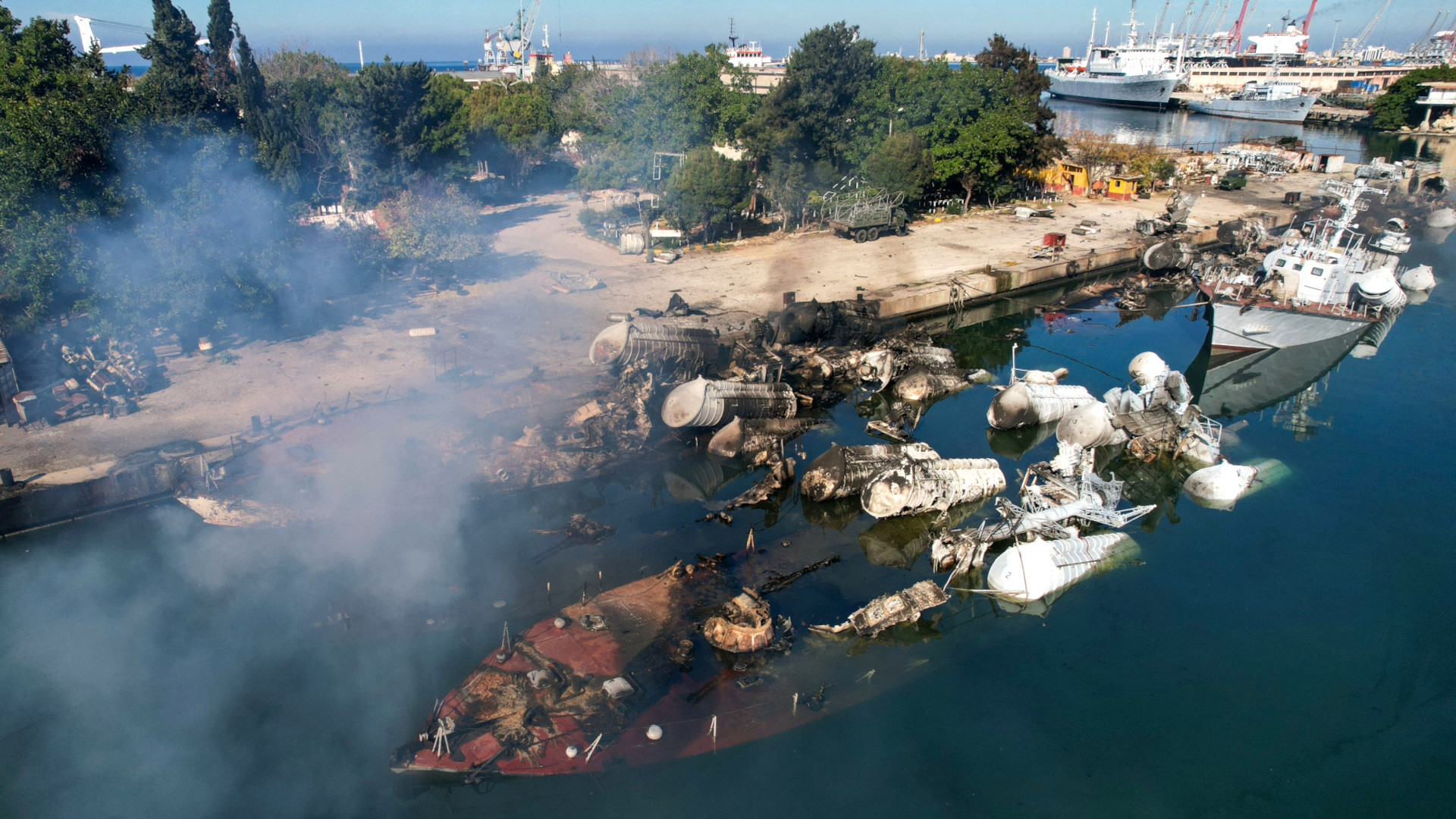Pictures and videos have now emerged of the aftermath of Israeli strikes on the Syrian port of Latakia overnight, which destroyed at least six Soviet-era Osa II class missile boats. The targeting of Syrian Navy assets was part of a larger operation Israel launched involving hundreds of strikes aimed at preventing military assets from the now-defunct regime of Bashar Al Assad from falling into the hands of rebel factions.
Israel’s Defence Minister Israel Katz confirmed the strikes on the port of Latakia earlier today, saying his country’s “navy operated last night to destroy the Syrian fleet with great success” as part of broader efforts to “strike and destroy strategic capabilities that threaten the State of Israel.” Israeli ships reportedly employed unspecified surface-to-surface missiles to hit their targets in Latakia. The Israeli Navy does have a variety of corvettes and missile boats, including types capable of firing Harpoon and Gabriel anti-ship missiles, Naval SPIKE Non-Line-Of-Sight (NLOS), and loitering munitions.
Regardless of the munitions employed, as already noted, available imagery shows at least six Syrian Osa IIs were destroyed in the Israeli operation. Also called the Project 205 missile boat, this is a 1960s-era Soviet design whose primary armament is the equally dated P-15 Termit anti-ship missile (also known in the West as the SS-N-2 Styx). The P-15 is an active radar-guided missile with the baseline version having a range of 25 miles (40 kilometers), and the improved P-15M variant (which Syria is said to have received) extends that out to 50 miles (80 kilometers).



Osa IIs, which are 127 feet long and displace 235 tons with a full load, can carry up to four of the large P-15s at a time. The boats, which can hit top speeds of around 40 knots, also have a pair of radar-directed AK-230 close-in weapon systems, each armed with two 30mm automatic cannons — one at the bow and the other at the stern.

Prior to last night’s strikes, how many Osa IIs the Syrian Navy still had in inventory, how seaworthy they may have been, and whether any P-15 missiles were still available to load onto them, is unclear. Syria previously acquired a mix of even older Osa I types, as well as Osa IIs, with the latter boats being the most capable surface vessels still in service in Syria to any degree prior to Assad’s downfall.
The available imagery shows other smaller craft were caught up in the Israeli strikes, which also damaged port infrastructure, as seen below.

The fate of other assets known to be in Syrian Navy inventory, including smaller Iranian-supplied Tir II class missile boats capable of firing Noor anti-ship missiles (an Iranian clone of the Chinese C-802) and Russian-made Raptor class patrol craft, is unclear.
Beyond ones on the port in Latakia, Israel’s launched more than 300 total strikes on targets across Syria, reportedly with a particular focus on surface-to-surface and surface-to-air missiles, as well as other air defense assets. Fixed-wing aircraft and helicopters, as well as sites linked to Syria’s chemical weapons program, were also struck.
Katz has already promised more strikes on targets in Syria if whatever new regime emerges in the country presents a threat or seeks to realign itself with Iran. Israel has also launched a ground incursion into Syrian territory, which it says is intended to provide a buffer amid the current uncertainty in its neighbor to the north. Israel’s actions have drawn criticism from the United Nations, as well as from several countries in the region and the broader Middle East, including Egypt, Iran, Iraq, Qatar, Saudi Arabia, and Turkey.
Otherwise, the situation in Syria remains extremely fluid. Various factions are now looking to consolidate their positions after one rebel coalition’s lightning advance south to Damascus precipitated the downfall of Assad’s brutal decades-long dictatorship this past weekend. Multiple foreign actors beyond Israel, including Russia, the United States, and Turkey, are also actively involved in the country’s current affairs.
Whatever happens in the coming days, weeks, and months, Israel has already delivered a significant blow to what was left of the Syrian Navy, as well as other military assets belonging to the Assad regime.
UPDATE: 1:50 PM EST —
The Israel Defense Forces (IDF) have now released strikes from the operation targeting ex-Assad regime assets across Syria, including the Osa IIs, which was dubbed Bashan Arrow. Clips show munitions with operator-in-the-loop guidance, something that Israeli defense contractors pioneered the development of and continue to be world leaders in, were used against the missile boats. The aforementioned Naval SPIKE Non-Line-Of-Sight (NLOS), as well as navalized Green Dragon loitering munitions in service with Israel’s Navy, use this method of guidance.
Contact the author: joe@twz.com

